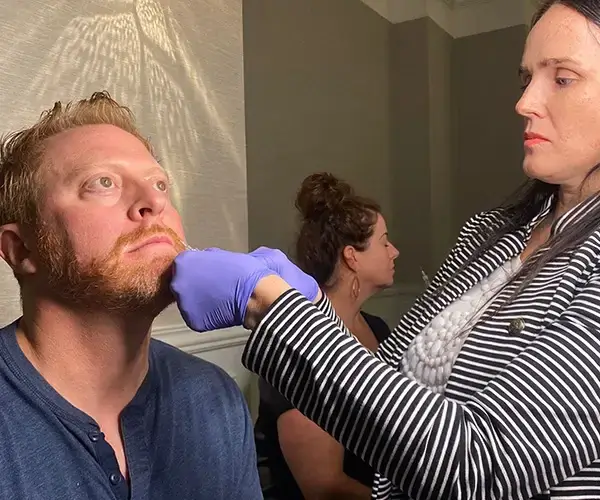Trend Alert: All About Lip Tenting
By Dr. Stephen Cosentino
PRESIDENT OF EMPIRE MEDICAL TRAINING
Do traditional lip injection techniques get it wrong?
That’s what proponents of the lip tenting technique believe. And evidence from controlled studies and years of patient feedback indicates they’re onto something.
Here’s what you need to know about this growing trend in lip filling procedures.
What Is Lip Tenting?
Lip tenting is an advanced lip augmentation technique focused on the upper lip. It’s also known as the “Russian lip” technique.
Developed in 2005 by aesthetic professionals at the Vancouver Laser and Skin Care Center in British Columbia, the lip tenting technique utilizes a vertical rather than linear (or parallel) angle for upper lip filler injections.
The vertical approach angle offers “optimal control over both shape and volume in enhancement, especially in patients with asymmetrical lips, lip pockets and in those who require correction from previous suboptimal lip augmentation,” according to a study by Martin Braun, Susan Braun, and Tom van Eijk.
How Does Lip Tenting Work?
Lip tenting is not a new trend, but it hasn’t been all that popular until recently. Some comprehensive dermal filler training courses do teach it, but many ignore it in favor of traditional techniques more likely to produce suboptimal results.
That’s unfortunate because lip tenting is not difficult for trained providers to understand.
Lip Tenting Procedure
The provider makes multiple injections of small amounts of hyaluronic acid filler along the collagen-rich white roll (the boundary between the upper lip’s vermilion border and the philtrum).
These relatively deep injections begin at the oral commissure (the upper and lower lips’ meeting point at the corner of the mouth) and continue along the white roll, up the canine arc, to the philtrum. They’re symmetrical, placed at corresponding points of the upper lip on both sides of the mouth.
Lip Tenting Benefits vs. Traditional Lip Filler Injections
Properly executed lip tenting injections add volume beneath the tissue of the white roll, creating subtle upward projections (hence “tenting”) that enhance the white roll’s contours without actually filling it. They avoid the vermilion border completely.
The result is a fuller, more natural-looking upper lip that retains its shape without telltale filler bulges or nodules. By contrast, the traditional linear approach angle increases the risk that a linear filler bolus will form along the white roll and vermilion border, creating unsightly bulges along the boundary or promoting a flat, shapeless “sausage lip” effect. This suboptimal result is more likely when the vermilion border is injected directly (at any angle).
Lip Tenting vs. “Lip Flip” Technique
Lip tenting is often compared to the increasingly popular “lip flip” technique, which creates a similar “tented” or “projected” effect.
However, there are important practical and aesthetic differences between these two techniques. The lip flip uses Botox or another botulinum toxin neuromodulator to relax the small muscles above the upper lip and reduce “gummy smile,” or the appearance of excess gum tissue in the upper jaw when smiling. Lip flip procedures may be paired with dermal filler injections, but it’s the Botox® that creates the tenting effect.
From an aesthetic perspective, most providers and patients regard lip tenting as more natural-looking than the lip flip. The technique’s results last a bit longer as well, typically six months or more compared with three to six months for the lip flip.


